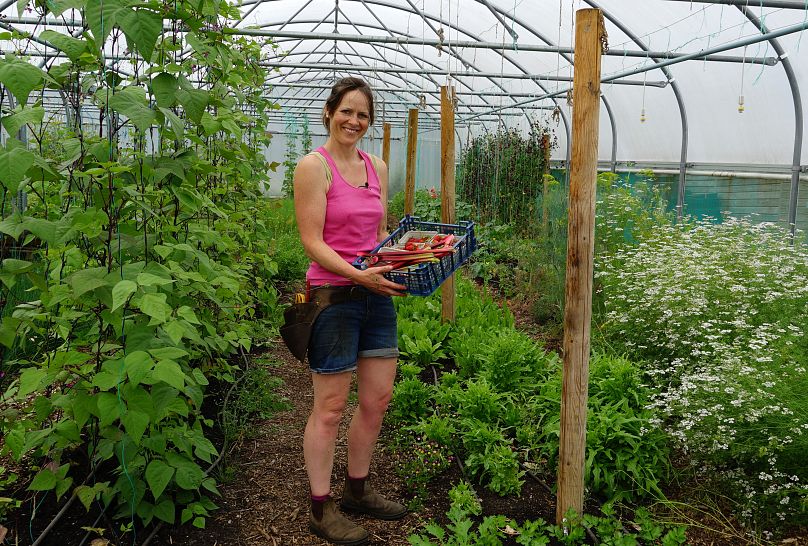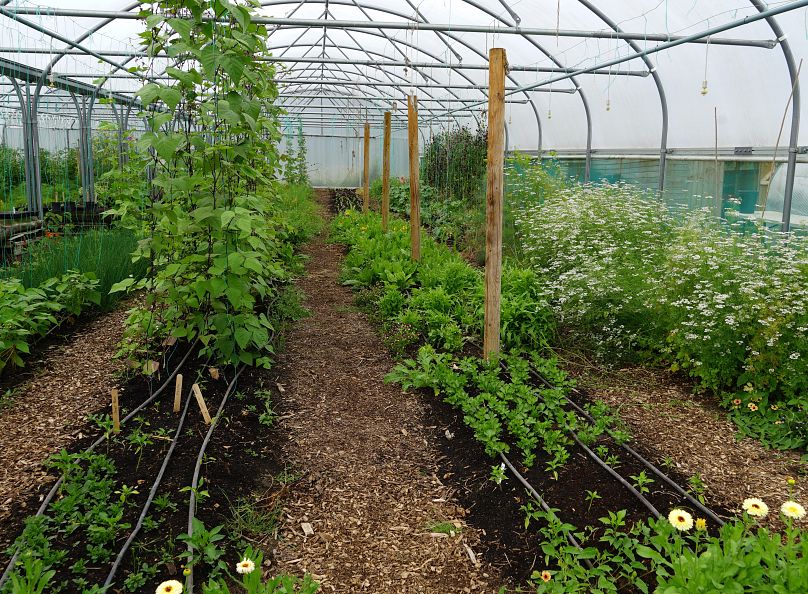In modern cities, we rarely know the full story behind what ends up on our plates: where food comes from, how it is produced, and how it affects our environment. In this episode, we’re meeting two women who are working to enhance food security by bringing food to the core of our urban centres.
“Our minds are shaped by food as well as our bodies, our cities, our landscapes, our economy, our politics, our climate, our habits, the way we socialise with one another, our relationship with nature”. Carolyn Steel is a British architect, thinker and bestselling author who lives in London. She believes that understanding this connection is the first step to changing how the global food system works and making sure that everyone eats well.
In this episode of The Star Ingredient, we travelled to London to meet Carolyn and Chloё Dunnett, a farmer who sought to put Steel’s academic ideas into practice. Thanks to their insight, we discovered how everyone can play a role in making the global food system more sustainable by bringing food back to the centre of our lives.
Conceiving Sitopia, a city built around food
In her first bestseller Hungry City: How Food Shapes Our Lives published in 2008, Carolyn Steel described how ancient civilizations constructed their cities based on their food needs. Proximity to water sources, soil texture, pasture for animals were essential factors to consider before establishing a settlement.
With the industrial revolution, however, the relationship between humans, food and cities changed dramatically. As people moved in droves to urban centres in search of work, the demand for food grew and the way in which food was produced and distributed gradually changed. With the development of capitalism, food became cheap since it started externalising its environmental and societal costs to attract more buyers.
The economist Raj Patal in his book The Value of Nothing explains this problem through the metaphor of a burger. According to him, a burger should cost $200 to cover the environmental consequences of its production, like deforestation and water use.
In her second book Sitopia: How Food Can Save the World published in 2020, Steel developed the concept of Sitopia. “It's from the Greek “sitos” for “food” and “topos” for “place”, she explains. Sitopia is a city built around food, a place that makes it the centrepiece of human-city relations.
But how can we make Sitopia a reality? According to Steel, the recipe is ambitious and requires many ingredients: economic revolution, cooperation between countries and societal innovation. “We have to have a different taxation system so that people can afford to eat well, and we have to share our land differently because we need more farmers with more access to land” she suggests.
During the podcast, Steel explains why reimagining the way we produce food is crucial to bolstering food security and creating a sustainable food system. “If you farm regeneratively, you're basically mimicking natural systems and that involves the amount of animals in the system that basically natural ecosystems support,” says Steel.
“So meat and dairy go back to being luxury foods that are raised on the back of an otherwise plant-based mixed organic farming system,” she adds.
Creating Sitopia, the London farm that revalues food
There are some people that have already started to make Steel's vision become a reality, like Chloё Dunnett, the founder of the Sitopia farm, in the outskirts of London.
“Because this is about an optimistic vision of change and about the whole system”, Dunnett explains in this episode of the podcast.
The farm began operating just over two years ago with the help of volunteers on a field that was previously used for pasture. Here they grow beetroots, carrots and other crops depending on the seasons. With one golden rule: no pesticides, nor chemicals.
Today the farm works with restaurants, flower shops and people from the neighbourhood. In two years it has tripled its income to £60,000 (around €70,000).
Still, Dunnett stresses that Sitopia is not about economic success. “You know, it's not for profit, but we are here to grow proper volumes of food and sell it and use that to cover our costs. This is about scale, essentially. Because I don’t think you can rely on goodwill to change the food system. The economics of it are very important, as well as environmental health and social aspects of it”.
Dunnett believes a 360° change is necessary to boost a more sustainable and resilient food system, a global Sitopia. And Carolyn Steel agrees.
If you’re hungry for more recipes and stories about indigenous African ingredients, listen to the first 8 episodes of our series.
The podcast The Star Ingredient was funded by the European Journalism Centre, through the Solutions Journalism Accelerator. This fund is supported by the Bill & Melinda Gates Foundation.



















